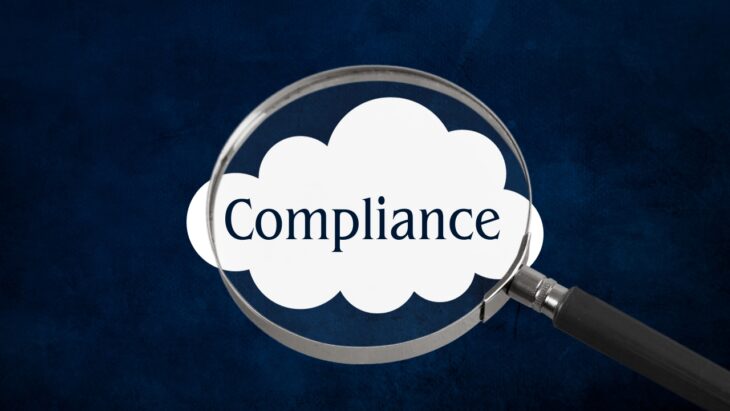In the rapidly evolving landscape of modern business, risk management is not just a necessity but a pivotal factor in ensuring sustainable growth and stability. For fast-growing businesses, the ability to effectively manage risks can be the difference between thriving and barely surviving.
In this guide, I’ll explore 8 indispensable risk management tools and tech strategies tailored for such businesses. This post is designed to provide entrepreneurs, executives, and risk managers with the insights and tools needed to navigate the complexities of today’s business environment while preparing for the challenges of tomorrow.
Table of Contents
Toggle1. Cloud-Based Risk Management Software

Cloud-based risk management software offers an agile and scalable solution for businesses experiencing rapid growth. These tools provide real-time data analysis, monitoring, and reporting capabilities that are essential for making informed decisions quickly.
With cloud technology, businesses can access their risk management systems from anywhere, ensuring continuity and responsiveness in fast-paced environments.
The second advantage of cloud-based software lies in its cost-effectiveness and ease of customization. Fast-growing companies often operate on tight budgets and need solutions that can adapt to their changing needs without requiring significant investment.
Cloud-based risk management tools offer subscription models that are scalable and customizable, allowing businesses to choose features that best fit their unique risk profile and budget.
For businesses seeking a comprehensive solution to streamline their risk management processes, AdaptiveGRC’s platform offers a range of tools tailored to meet these needs. Learn more about their specific risk management features here https://adaptivegrc.com/solutions/risk-management/.
2. Big Data Analytics
Big data analytics is revolutionizing the way businesses approach risk management. By harnessing vast amounts of data, companies can uncover hidden risks and predict potential issues before they escalate.
Big data tools enable businesses to analyze trends, patterns, and correlations in large datasets, providing insights that traditional risk assessment methods might miss.
In addition to identifying risks, big data analytics also aids in strategic decision-making. By understanding the intricacies of market trends, customer behavior, and operational processes, businesses can make more informed decisions that align with their growth objectives.
This data-driven approach to risk management is particularly useful for fast-growing companies that need to stay ahead of the curve in a competitive and ever-changing business landscape.
3. Artificial Intelligence and Machine Learning

Artificial intelligence (AI) and machine learning (ML) are at the forefront of technological innovation in risk management.
These technologies enable businesses to automate complex processes, analyze large data sets, and predict future trends with a high degree of accuracy. AI-driven tools can identify subtle patterns and anomalies that human analysts might overlook, providing a deeper understanding of potential risks.
The implementation of AI and ML also allows for dynamic management strategies. As these systems learn and adapt over time, they can continuously refine risk assessments and recommendations.
This adaptive approach is invaluable for fast-growing businesses, as it ensures that the management strategies evolve in tandem with the company’s growth and changing risk landscape.
4. Cybersecurity Measures
In our digital age, cybersecurity is a critical aspect of risk management. Fast-growing businesses are often prime targets for cyber attacks due to their expanding digital footprint and sometimes underdeveloped security protocols.
It’s also crucial to have a response plan in place for potential breaches. By prioritizing cybersecurity, companies can mitigate one of the most damaging and prevalent risks in today’s business world.
5. Compliance Management Systems

As businesses expand, they often face an increasing number of regulatory requirements. Compliance management systems are crucial for keeping track of these requirements and ensuring that the company adheres to legal and industry standards.
These systems help in identifying potential compliance risks and implementing measures to address them.
A robust compliance management system should offer features like regulatory change tracking, document management, and audit trails.
For fast-growing businesses, these systems not only help in avoiding legal penalties but also in maintaining a reputation for reliability and integrity. By proactively managing compliance, companies can focus on growth without the looming threat of regulatory setbacks.
6. Financial Tools
Financial risks such as cash flow issues, market volatility, and credit problems can be particularly challenging for fast-growing businesses.
Financial risk management tools are designed to help businesses monitor and mitigate these issues. These tools can provide detailed financial analyses, forecasting, and budgeting capabilities to ensure financial stability and informed decision-making.
Moreover, they offer insights into potential financial pitfalls and opportunities, allowing businesses to strategically allocate resources and manage debts. By utilizing these management tools, growing companies can navigate the complexities of financial planning and maintain a strong economic foundation amidst expansion.
7. Project Risk Management Software

This software is essential for businesses undertaking large-scale projects as part of their growth strategy.
These tools help in identifying, analyzing, and mitigating risks associated with specific projects. They enable project managers to track progress, set benchmarks, and adjust strategies in response to emerging risks.
The strength of this software lies in its ability to provide a comprehensive view of all project-related risks. This overview helps in establishing priorities and allocating resources more effectively.
For fast-growing companies managing multiple projects simultaneously, these tools are indispensable in ensuring project success and avoiding costly overruns or delays.
8. Supply Chain Solutions
For businesses with complex supply chains, managing risks related to suppliers, logistics, and market fluctuations is critical. These management solutions offer a way to monitor and mitigate the risks. They provide insights into supply chain vulnerabilities, supplier performance, and potential disruptions.
These tools enable businesses to develop contingency plans and make informed decisions about supplier relationships and logistics strategies.
In an era where supply chain disruptions can have far-reaching impacts, having a robust supply chain risk management system is essential for businesses looking to grow without being derailed by external factors.
Concluding Thoughts
For fast-growing businesses, effective risk management is not just about preventing losses but creating a stable foundation for sustainable growth. The tools and strategies outlined in this guide offer a comprehensive approach to managing the multifaceted risks that come with expansion.
Remember, the goal of risk management is not to eliminate all risks but to understand and manage them effectively. As your business grows, these tools and strategies will be invaluable assets in your journey toward long-term prosperity and resilience.


